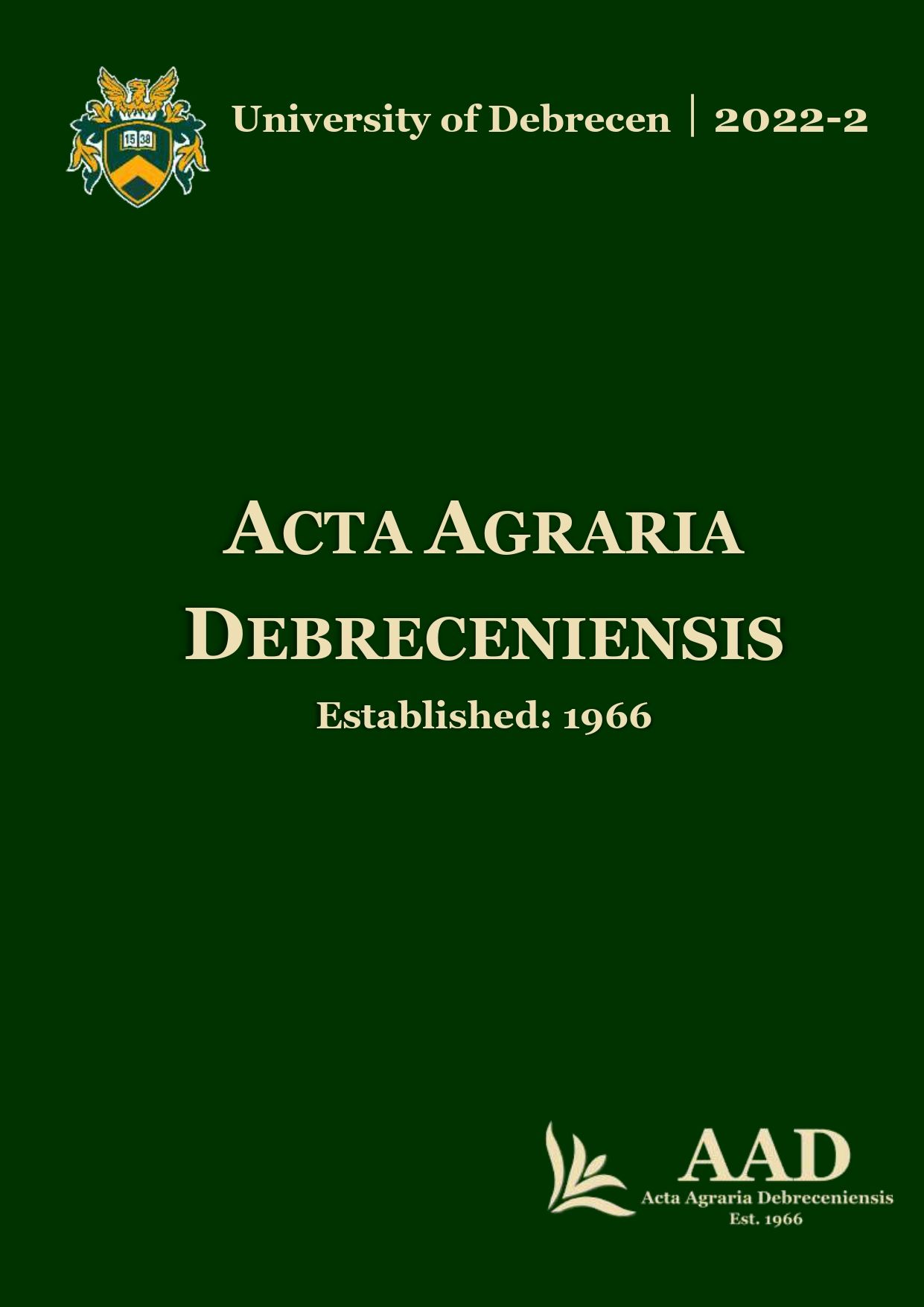Articles
Analysis of the plant physiological effects of late, artificial corn smut infestation using remote sensing methods
Published:
2022-12-06
Authors
View
Keywords
License
Copyright (c) 2022 by the Author(s)

This work is licensed under a Creative Commons Attribution 4.0 International License.
How To Cite
Selected Style:
APA
Radócz, L., Sápi, L., Zagyi, P., Horváth, É., & Tamás, A. (2022). Analysis of the plant physiological effects of late, artificial corn smut infestation using remote sensing methods. Acta Agraria Debreceniensis, 2, 31-35. https://doi.org/10.34101/actaagrar/2/10367
Received 2021-11-26
Accepted 2022-10-03
Published 2022-12-06
Accepted 2022-10-03
Published 2022-12-06
Abstract
In Hungary, corn is also infected by several important pathogens. In this experiment, we analysed the plant physiological effects of artificial late cron smut infestation using remote sensing methods under field conditions We examined the experimental area from which the data comes from with a DJI Phantom 4 Multispectral Drone NDVI and NDRE indices were calculated and analyzed in GIS programs. Individuals treated with a higher dose remained much greener than the untreated control. They also showed significant differences within the indices used.
References
- Barnes, E.M.–Clarke, T.R.–Richards, S.E.–Colaizzi, P.D.–Haberland, J.–Kostrzewski, M.–Waller, P.–Choi, C.–Riley, E.–Thompson, T. (2000): "Coincident detection of crop water stress, nitrogen status and canopy density using ground based multispectral data." Proc. 5th Int. Conf. Precis Agric. Bloomington, MN, USA
- Bhandari, A.K.–Kumar, A. (2012): “Feature Extraction using Normalized Difference Vegetation Index (NDVI): A Case Study of Jabalpur City”, Proceedings of Communication, Computing & Security. Procedia Technology Volume 6, pp. 612–621. https://doi.org/10.1016/j.protcy.2012.10.074
- De Jong, S.M.–Van der Meer, F.D. (Eds.). (2007): Remote sensing image analysis: including the spatial domain (Vol. 5). Springer Science & Business Media.
- Frommer, D.–Veres, Sz.–Lévai, L.–Radócz, L.: 2015. Régi-új betegség a kukorica golyvásüszög (Ustilago maydis). Journal of Agricultural Sciences. 66: 43–46.
- https://ec.europa.eu/eurostat/statistics-explained/index.php?title=
- Agricultural_production_-_crops#Cereals
- https://www.ksh.hu/stadat_files/mez/hu/mez0072.html).
- Mahlein, A.K.–Oerke, E.C.–Steiner, U.–Dehne, H.W. (2012): Recent advances in sensing plant diseases for precision crop protection. Eur J Plant Pathol 133:197–209. doi:10.1007/s10658-011-9878-z
- Mazaheri-Naeini, M.–Sabbagh, S.K.–Martinez, Y.–Séjalon-Delmas, N.–Roux, C. (2015): Assessment of Ustilago maydis as a fungal model for root infection studies. Fungal Biolodgy, 119 (2–3), pp. 145–153. https://doi.org/10.1016/j.funbio.2014.12.002
- Nageswara, P.P.R–Shobha, S.V.–Ramesh, K.S.–Somashekhar, R.K. (2005): “Satellite-based assessment of Agricultural drought in Karnataka State, Journal of the Indian society of remote sensing”, 33 (3), pp. 429-434., 2005
- Pécsi, S. (1997): A kukorica betegségei. in: Glist, M.–Horváth, J.–Kuroli, G.–Petróczi, I. (szerk.): Növényvédelem. Mezőgazda Kiadó, Budapest. pp. 49–60.
- Sankaran, S.–Mishra, A.–Ehsani, R.–Davis, C. (2010): A review of advanced techniques for detecting plant diseases.
- Comput. Electron. Agr. 72, 1–13. https://doi.org/10.1016/j.compag.2010.02.007
- Sharma, P.–Jha, A.B.–Dubey, R.S.–Pessarakli, M. (2012): Reactive oxygen species, oxidative damage, and antioxidative defense mechanism in plants under stressful conditions. J Botany. 2012:1–26. doi:10.1155/2012/217037
- Szőke, L.–Kovács, G.–Biró, Gy.–Rácz, D.–Radócz, L.–Takácsné, H.M.–Kovács, B.–Tóth B. (2021a): Hormonkezelések hatása a golyvásüszög fertőzés tüneteinek mérséklésére. Növénytermelés 70. 2 p.1–22.
- Szőke, L.–Moloi, M.J.–Kovács, G.–Biró, Gy.–Radócz, L.–Hájos, M.–Kovács, B.–Rácz, D.–Danter, M.–Tóth, B. (2021b): The Application of Phytohormones as Biostimulants in Corn Smut Infected Hungarian Sweet and Fodder Corn Hybrids. Plants. 10(9):1822. https://doi.org/10.3390/plants10091822
- Tucker, C.J. (1979): Red and photographic infrared linear combinations for monitoring vegetation. Remote Sens. Environ. 8, 127–150. https://doi.org/10.1016/0034-4257(79)90013-0
- West, J.S.–Bravo, C.–Oberti, R.–Lemaire, D.–Moshou, D.–McCartney, H.A. (2003): The potential of optical canopy measurement for targeted control of field crop diseases. Annu. Rev. Phytopathol. 41, 593–614. doi: 10.1146/annurev.phyto.41.121702.103726

 https://doi.org/10.34101/actaagrar/2/10367
https://doi.org/10.34101/actaagrar/2/10367